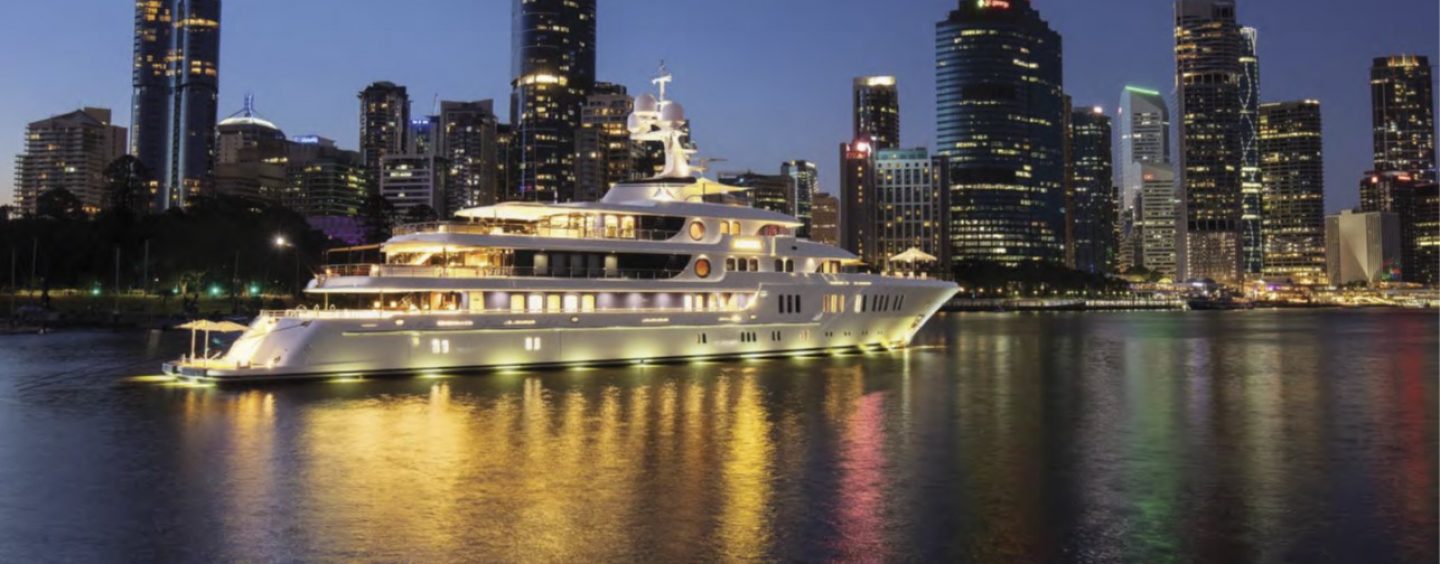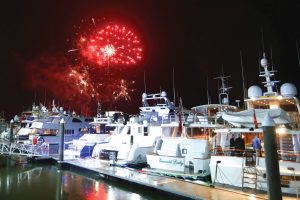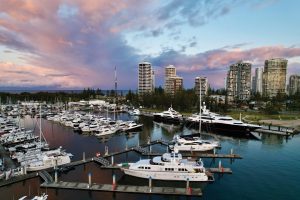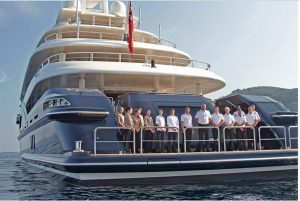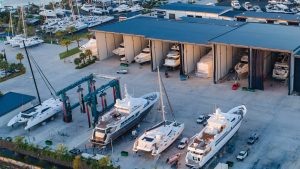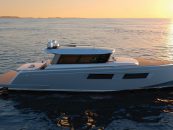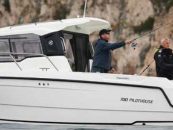EXCLUSIVE REPORT
By Roselle Tenefrancia
ASMEX 2022 HIGHLIGHTS
Talking about the Olympics – Assistant Minister for Tourism Industry Development emphasised the potential of the superyacht industry in the 2032 Brisbane Olympics. Queensland has a $232M refit industry and this fact alone should make Australia viable as a superyacht destination. He also gave an example of superyachts being the alternative accommodation options for sport teams as they offer better privacy.
David Good, CEO of Australian International Marine Export (AIMEX) Group, noted that while the industry is looking forward to the potential of the 2032 Brisbane Olympics for the superyacht sector, it is equally important to “sell” Australia as a destination beyond the Olympics.
Preparation is the key factor. This includes coordinated activities among the marine and superyacht industry members, policy and decision makers, affiliated sectors, and the general community. Building infrastructure is also a major aspect that needs to be focused on, according to both John Hogan, CEO of Superior Jetties, and Brett James, general manager of Southport Yacht Club (SYC). James particularly noted that the SYC megayacht berth took four years to complete, and so foresight is very important. They also emphasised the need to find ways to link the industry with key government agencies.
Economic perspectives – Despite the focus on the Ukraine-Russia conflict, Peter Munckton, Bank of Queensland’s chief economist, noted that Russia contributes only 2% to the global economy, the same as Australia. Munckton presented four key factors that influence our economy. First, he emphasised that we will become comfortable living with COVID. Historically, all the “bad viruses” in the past are still with us. Second, geopolitics, such as the issues arising from the Ukraine-Russia conflict, will be concerned with military spending, food security and energy. Third, with inflation comes supply chain problems. Finally, interest rates are major factors in the growth of economic activity.
Munckton pointed out Australia’s reliance on China in manufacturing and suggested that the goal should be to reduce supply chain vulnerabilities. Currently, manufacturing represents 6% of Australia’s economic activity, so the country should make itself attractive for manufacturing industries by improving policies on industrial relations, climate change and corporate taxation.
Alternative energy sources – With the global movement to use green energy, the marine industry is also pioneering through the use of alternative sources of energy, such as methanol, and other hybrid fuel. Volvo Penta representatives Martin Jufors and Hanna Ljungqvist presented on the development of hybrid power sources for their marine propulsion technology. They emphasised that superyacht owners look for the most efficient, cleanest, cheapest energy. They also indicated that pollution is a major factor in the world of innovation.
The 12 factors for planning – Martin Redmayne, chairperson and editor-in-chief of The Superyacht Group, presented on twelve factors that play key roles in planning for the future of the superyacht sector: (1) address supply chain challenges; (2) future proof by being greener, smarter and cleaner; (3) bank on value propositions, such as “passion projects” (e.g restoration); (4) focus on buyer behaviour that is now centred on family time, privacy and escape; (5) the “bitcoin” industry; (6) market perception of the sector; (7) greening by showing how yachting makes a positive story and contribution; (8) the COVID factor; (9) the “Putin” factor; (10) the charter factor entailing organising the fleet market; (11) “blue sky horizon” where space travel is competing with yachting; and (12) Pacific v. The Med.
State of crewing – Redmayne propositioned that the growth in the superyacht crew sector is a key driver in the success of the superyacht industry. However, there is a high demand for skilled workers that is currently a challenge to address. Suzanne Davies, CEO of Marina Industries Association discussed the online job search and career online platform, Marine Jobs, aimed at marketing the marine industry as an attractive career path. During the panel discussion, Adam Chanter from TAFE Queensland discussed plans to address the future needs of young people, while Greg Newby from the Superyacht Crew Academy pointed out the strong ability of Australia to meet the demand of the superyacht industry and to attract post gap-year crew members.
MARINAS 2022 HIGHLIGHTS
Social trends – The impact of the global COVID-related regulations and activities contributed to the “intentional lifestyling” trend, as explained by Ashley Fell from McCrindle. Fell mentioned key concepts, such as “revenge spending”, return to local, and sustainability as part of the changing consumer trends. Currently, the GenZ comprise 14% of the population; but in 2030, they will comprise 34%. According to the McCrindle research, the top five hopes of the GenZ are: owning own home; full financial freedom and independence; excel in career; travel and see the world; and pursue interests and hobbies. Their top desires for careers are: purpose and meaning in work; work aligns with core values; workplace that is a community of strong social connections; their work has a positive impact on the world around them; and workplace flexibility.
Other significant trends include: (1) the shift from Google search to YouTube search, and (2) avoiding TLDR (“too long, didn’t read”) as a key factor in marketing to the current consumers.
The hospitality business – “Build a waterfront destination for the entire community,” is what Joe Ueberroth, owner and CEO of Bellingham Marine, proposed to the industry. Ueberroth encouraged the industry players to learn from the hospitality business and to think about opportunities to cater to non-marina customers.
To maximise the potential of the waterfront property, Ueberroth pointed out four important considerations: (1) to rotate focus on non-boaters and how to drive them to the marina facilities; (2) to build it right and design marinas for the target market; (3) to build to last, as lease periods are becoming longer; and (4) to elevate transient programs and services and to allow for more guest moorings.
Integrated place-based management for waterways – The Gold Coast Waterways Authority (GCWA) presented on how their office manage the waterways using place-based and people-based principles. Gold Coast has a population of 630,000, and there are currently 36,000 registrations for recreational boats and watercraft, and 700 commercial vessels, making Gold Coast a “waterways city”. Their work involves understanding users’ needs, managing place, dredging, and continuing communication with community and stakeholders.
At the special breakfast where representatives from various state agencies across Australia were in the panel, the discussion was focused on how government agencies are risk-based and implement rules and regulations based on the premise of avoiding or minimising risks to safety. The challenges remain on how stakeholders can be well informed about government research and policies, as the marina sector act as “mediators” between government and private stakeholders.
Moving forward with COVID (not post-COVID) – In Darren Vaux’s presentation, he emphasised on three concepts that is crucial to the success of the marina industry: (1) retention of boaters; (2) sustainability leadership; and (3) acting individually, collaboratively, and collectively on (1) and (2).
To retain boaters, he suggests that marinas should track and increase boat usage, collaborate with peers to create appealing waterways use, and collaborate with government to identify destinations. Vaux presented key messages from Discover Boating for 2022: out there, experience, adventure, freedom, community, joy, memories, best life, and significantly, diversity in gender, age, and background.
As a general rule, white boats do not sit well in the environmentalist narrative. So, for Vaux, it is important to address the concerns and needs of the environment, particularly on the use of energy. The “teal revolution” is concerned with decarbonising propulsion and use of sustainable materials, as well as adapting and becoming resilient to climate change.
The case of the “white spill” – In one of the breakout sessions at the Marinas 22 conference, Lessons Learned session, there was a discussion on addressing the problem of the “white spill”. This is the term used referring to the marine pollution caused by polystyrene beads deposited on coastlines and dispersing in the ocean and waterways. Most pontoons are made up of expanded polystyrene (EPS). During the last Brisbane floods, several pontoons were washed off through the river and out into the bay, where large chunks of EPS broke off and have now broken down further into tiny beads. These beads remain a threat to the birds and marine wildlife, and to the health and wellbeing of the ocean and the waterways.
While the government is taking on the challenge of addressing the environmental disaster resulting from the recent “white spill”, the marina industry is taking the lead in planning for the future, where rules will be put in place to identify ownership of the pontoon as a possible immediate change, and to implement the use of more environmentally sustainable materials in the manufacturing of pontoons.
To share your viewpoint about these subjects contact ed****@bo***********.au
Published in print July-September 2022






















